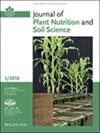The Circular Phosphorus Economy: Agronomic Performance of Recycled Fertilizers and Target Crops
Abstract
Background
The circular phosphorus (P) economy addresses economic and environmental penalties inherent to the current linear P economy. Phosphorus sources recovered from waste steams (recyclates) offer an alternative to conventional fertilizers.
Aim
This research aimed to assess the agronomic performance of P recyclates derived from wastewater (hazenite, struvite), treated sewage sludge ash (SSA) and compost (FOGO food organics/garden organics) with crops previously characterized for P use efficiency (PUE).
Methods
Phosphorus was supplied as granules and benchmarked against conventional fertilizers or mineral solution. Grown in controlled conditions, crops received recyclates individually or as amalgamates, with or without additional water-soluble P. We quantified P uptake, yield and phytate content, and calculated agronomic performance indicators.
Results
Results revealed that (1) crop genotypes with purportedly lower or higher PUE showed similar performance when grown with limiting P supply and/or less soluble P recyclates, (2) crop performance improved when less soluble P recyclates were combined with water-soluble P, (3) crops produced similar yield and biomass when supplied with an organo-mineral formulation, hazenite, or conventional fertilizer, (4) grain accumulated higher levels of the antinutrient phytate with excess soluble P.
Conclusion
We conclude that suitably formulated P recyclates can supplement or replace conventional fertilizers, and that fertilizer design should consider the solubility of recyclates and a crop's ability to access less soluble P. This adds to the growing body of evidence that well-formulated next-generation fertilizers can efficiently nourish crops. Integrating insights from controlled experiments and field trials is a cost-effective strategy to actualize the circular P economy.


 求助内容:
求助内容: 应助结果提醒方式:
应助结果提醒方式:


